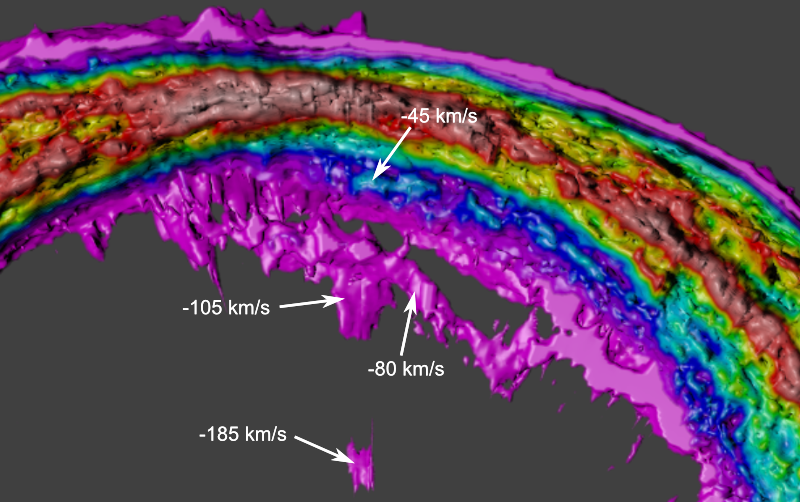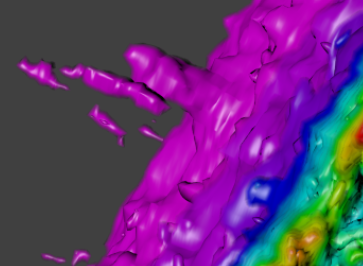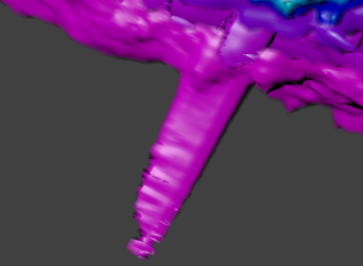
Anticentre cloud belts
As mentioned in the Ring and bar section, astronomers in the 1950s discovered anomalous velocity clouds towards the galactic centre that were eventually interpreted as a ring of gas expanding away from the galactic centre.
There are also anomalous velocity clouds visible in the galactic anticentre direction (180°). The nature and origin of these clouds is unknown.
There are two distinct belts of anticentre clouds with anomalous velocities. One of these has an anomalous velocity of about -80 km/s at 180° and stretches from about 133° to about 200°. It is composed of very cold gas (less than 5 K) and extends well above the galactic plane (and so is truncated in the above image). The large extent of the clouds suggest that they may be relatively close to the Sun.
A very different belt of clouds has an anomalous velocity of about -45 km/s at 180°. It is located close to the galactic plane and is much warmer than the -80 km/s clouds. Portions of the -45 km/s clouds reach 30 K in the anticentre direction. The -45 km/s band terminates at about 184°. Its origin is unclear as there is a fragmented band of clouds as warm as 45 K at high negative velocities (extending to about -110 km/s) in much of the second quadrant that seems distinct from the Centaurus arm and may be part of the -45 km/s belt.
High velocity clouds
There are many isolated high velocity cloud "islands" known to be present in the Milky Way halo. Two of these are visible in the above image. At 180° they can be seen at -185 km/s and -105 km/s. The -105 km/s cloud appears to be part of a galactic plane "ledge" that extends from the -80 km/s belt but this juxtaposition may just be a coincidence.
Peninsulas
In addition to anomalous clouds and cloud belts, the 1 K isosurface LAB image also reveals two velocity peninsulas that appear to jut out from the galactic disk.


The fragmentary peninsula in the third quadrant at 243.5° (image at left) extends out to a velocity of +173 km/s as can be seen in this Velocity Explorer image.
The third quadrant peninsula lies in the approximate direction of the supershell GSH 242-03+37. Is it possible that the extreme velocities visible in this direction are related to this supershell?
The fourth quadrant peninsula at 331.5° (image at right) extends to a velocity of 149 km/s. This peninsula contains a slightly warmer 5 K core that extends towards 0 km/s as you can see by crossfading between the 1 K and 5 K images using the Velocity Explorer.
It seems possible that the fourth quadrant peninsula may be associated with the high velocity thermal jet reported originating from the massive Norma arm molecular core G331.512-0.103. [Bronfman, L., et.al. 2008]
